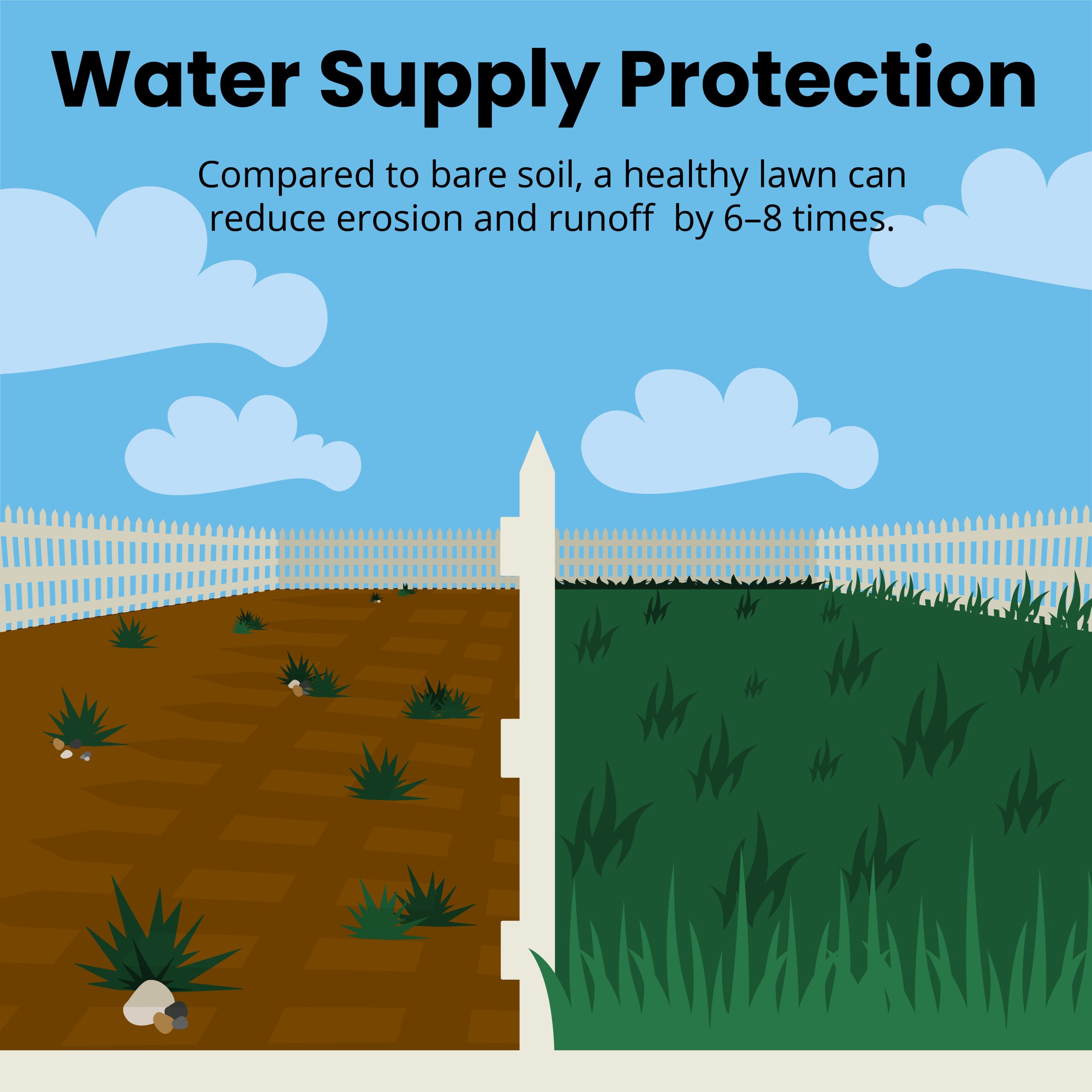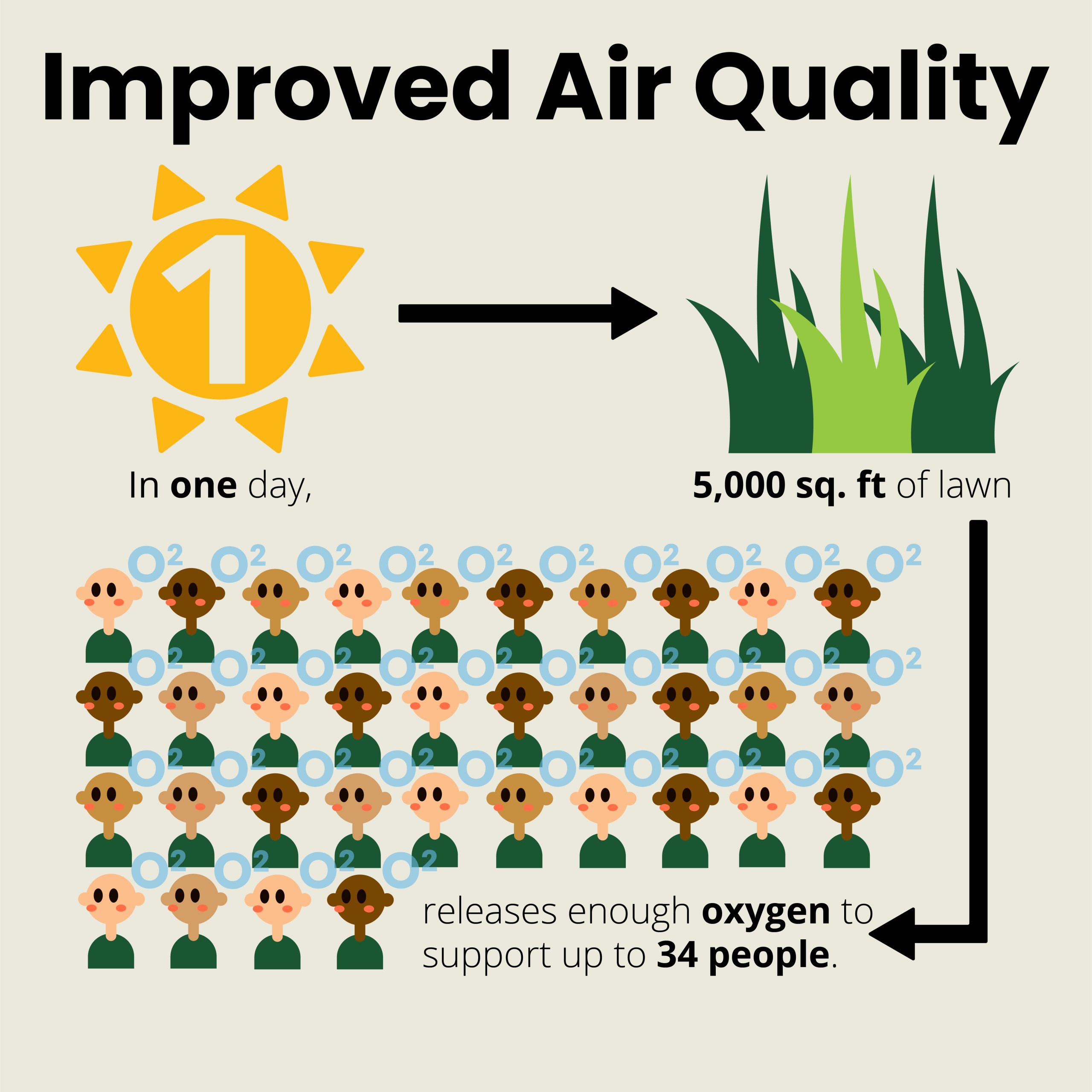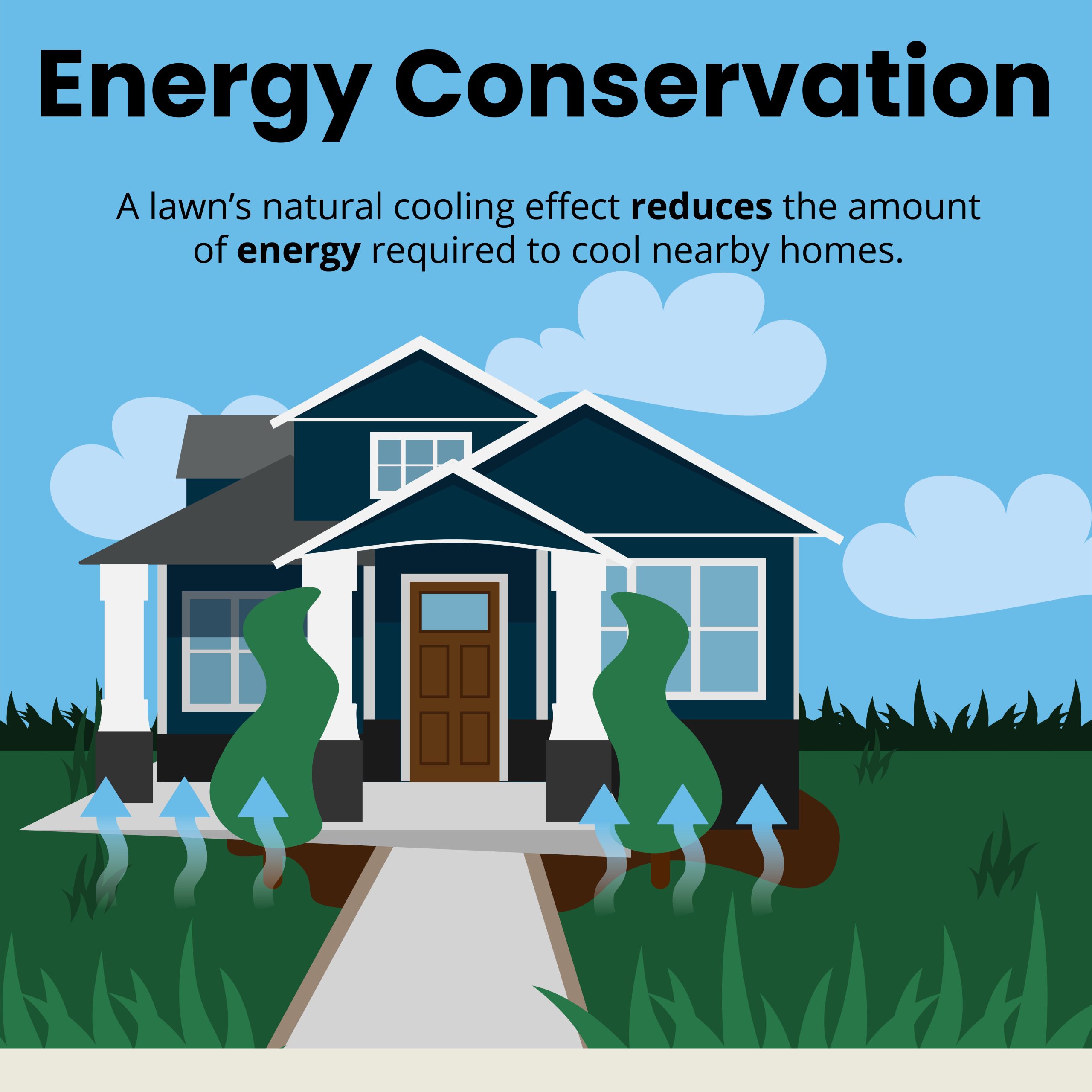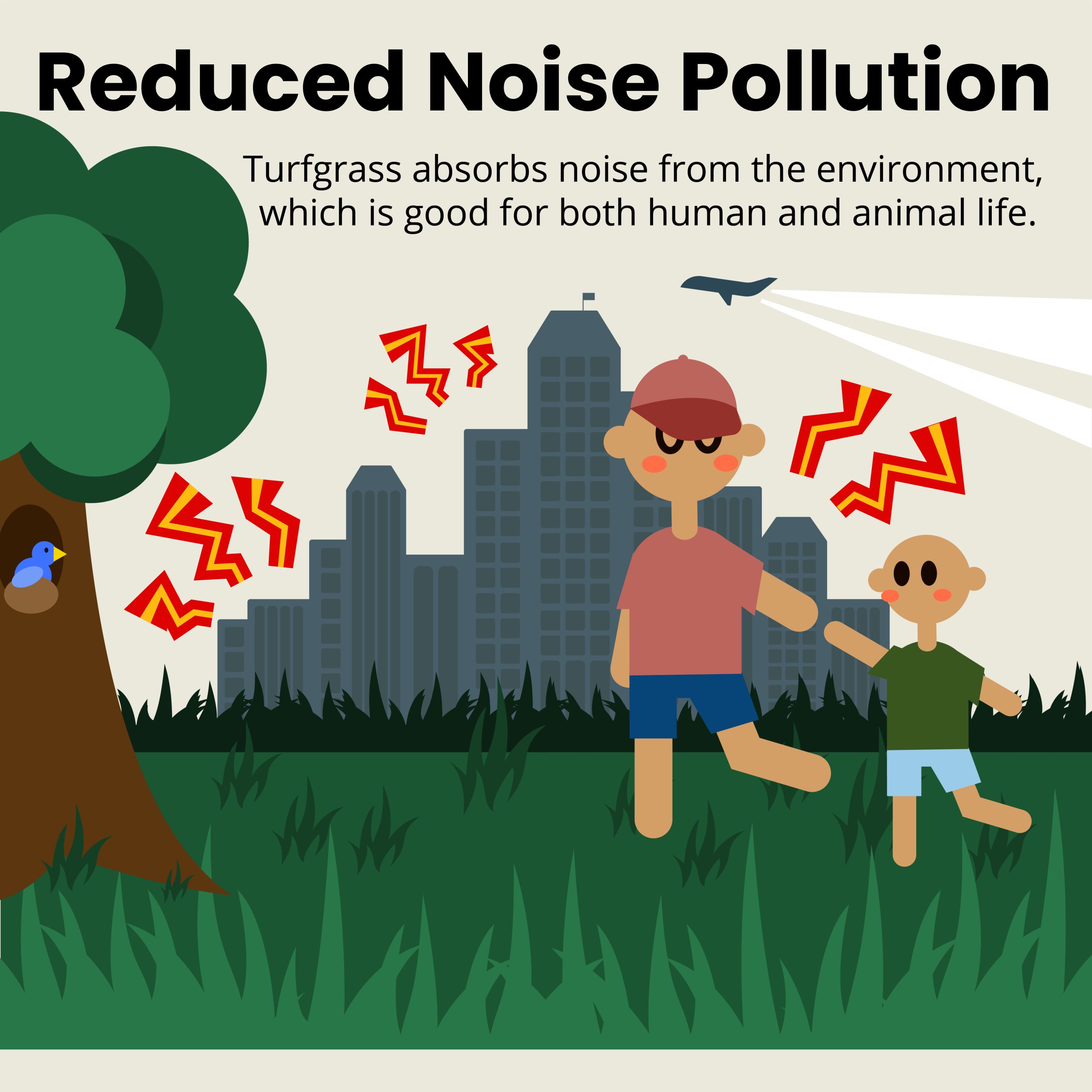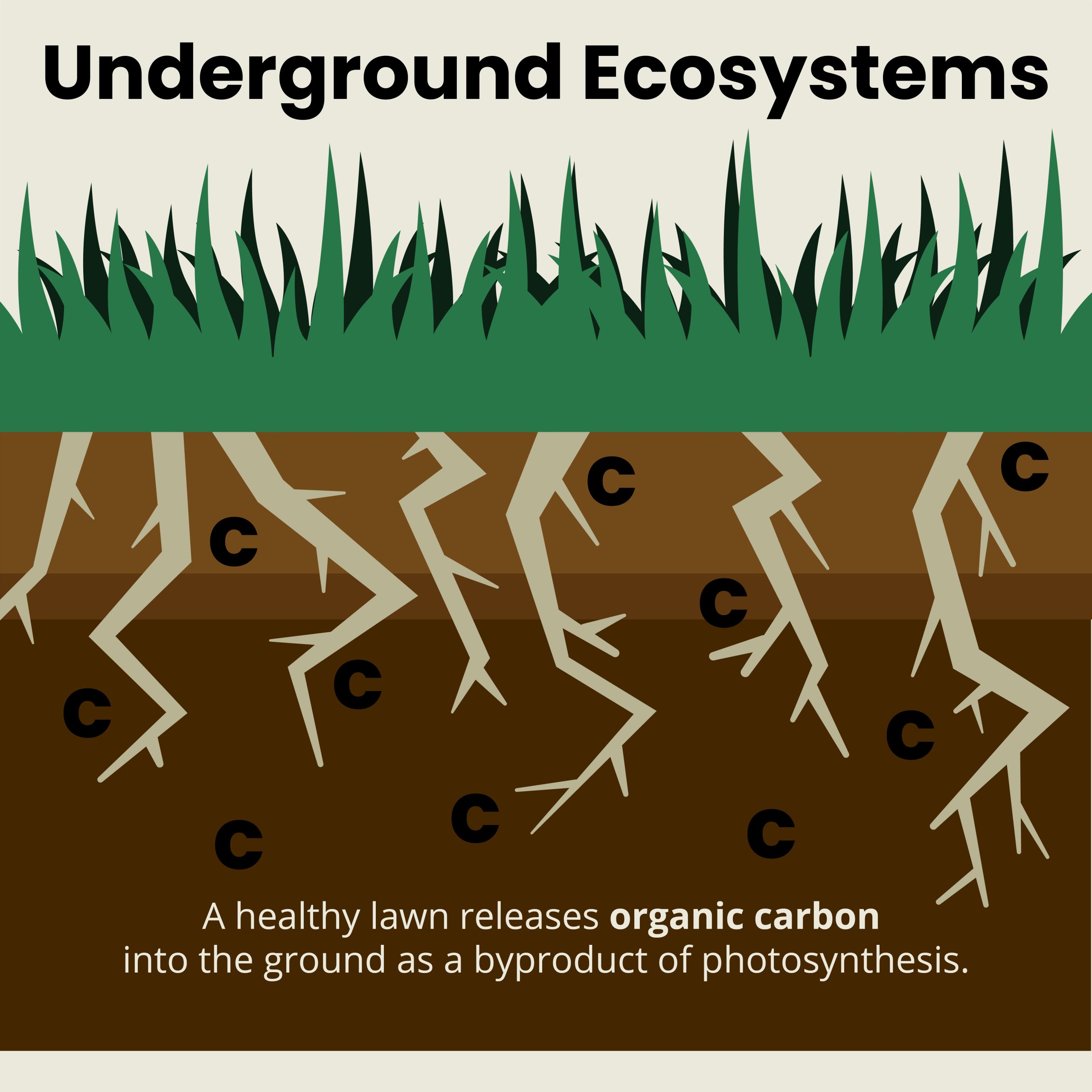Environmental Benefits of a Healthy Lawn
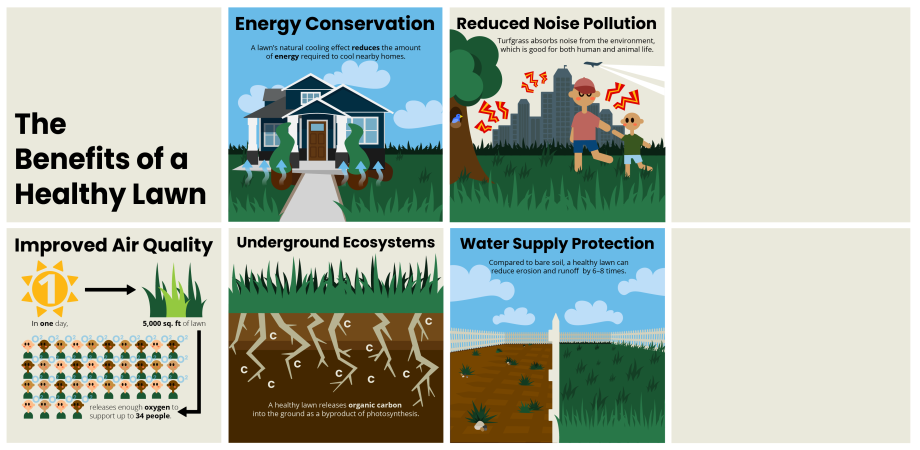
A healthy lawn not only creates curb appeal but also contributes to the health of the environment. Here are some of the many environmental benefits of a healthy lawn:
Water Supply Protection
Turf reduces soil erosion and runoff, which are two major threats to the cleanliness of the water supply. A lawn’s root system holds soil in place to prevent it from eroding. Grass also slows the flow of rainwater so it can be absorbed into the soil instead of becoming runoff. This slow absorption through established soil serves to filter impurities out of the water. Compared to bare soil, a lawn can reduce erosion and runoff by six to eight times.
Improved Air Quality
By absorbing carbon dioxide and releasing oxygen into the atmosphere, grass acts as a natural air purifier. According to The Lawn Institute, five thousand square feet of lawn release as much oxygen as fourteen to thirty-four people consume in a day. Turf also filters dirt, dust, smoke, and pollutants like sulfur dioxide from the air. It serves to both clean the atmosphere and supply oxygen to the environment.
Energy Conservation
Grass has a natural cooling effect, which reduces the amount of energy required to cool nearby buildings. This allows for energy conservation that helps the environment and the budget.
Reduced Noise Pollution
Turf absorbs noise from the environment, which is good for both human and animal life. Reduced noise pollution creates a more natural environment for animals, which rely on sound to communicate and survive. As an integral part of the environment, lawns benefit wildlife in addition to people.
Underground Ecosystems
Grass promotes the health of the soil underneath it and the many organisms that inhabit the ground. From fungi and bacteria to earthworms and ants, every level of the food chain benefits from organic matter in the soil. A lawn releases organic carbon into the ground as a byproduct of photosynthesis, promoting the health of the ecosystem underneath it. Managed turf cultivates more diversity in the underground microbiome than bare land does. Finally, a lawn is a good way to restore the natural composition of soil after it has been disrupted by construction projects.








